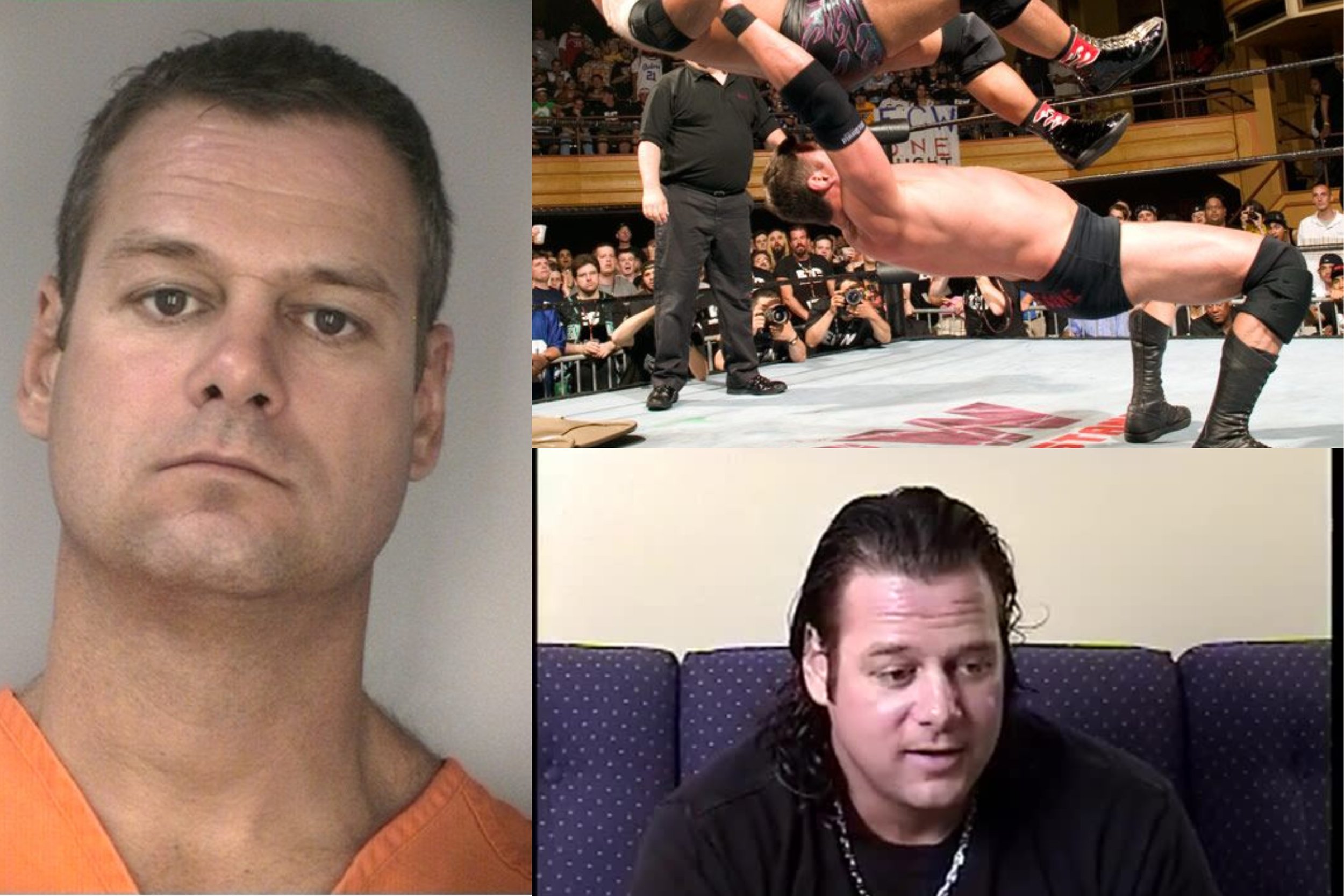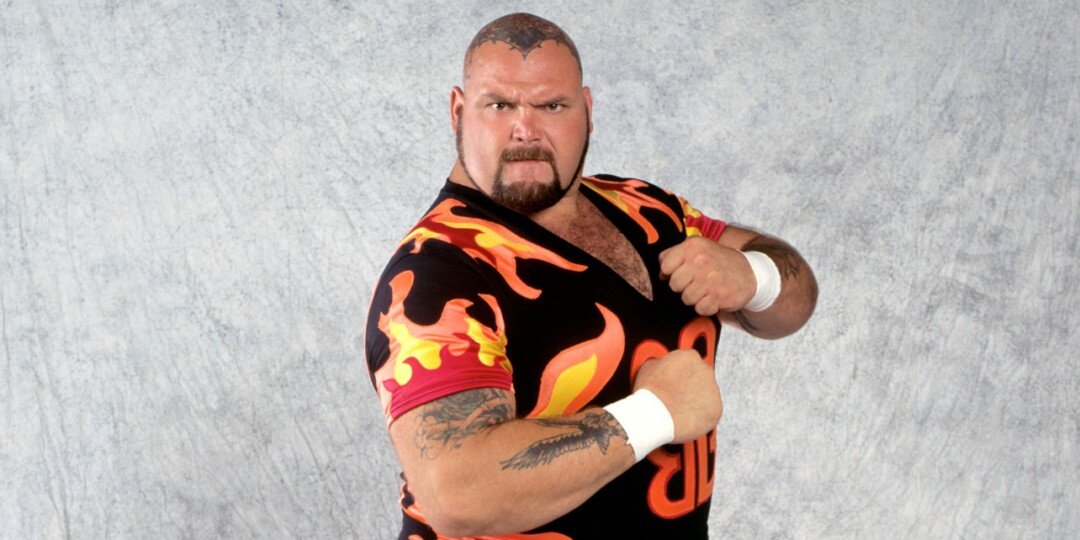Ed Gantner: A Cautionary Tale
Outside of Championship Wrestling from Florida, Ed Gantner is a name unfamiliar to most professional wrestling fans. Still, he was an individual who possessed tremendous potential, yet his flame was extinguished far too quickly.
Paul Heyman once described Ed by stating:
“I don’t think there’s anyone that’s had more promise walking in the door than ‘Big’ Ed Gantner. He was 6-foot-4, 275 pounds, with the right look, an extraordinary personality and boatloads of charisma. He had every asset and gift to become a WrestleMania main eventer.”
So, what happened to the man who Heyman hailed as a potential WrestleMania main-eventer?
Growing Up
Edward Jerome Gantner was born in Jacksonville, Florida, on February 4, 1959. By age 3, Ed threw around the football with his father and showed great promise.
Like many young boys, Ed desired to prove himself to his father while also dreaming about being big.
Known to be quiet in school, Ed was picked on due to his size and described as a puny little runt by his school friends, according to his mom.
When his parents split up at age 12, Ed turned to weightlifting as an immediate outlet and now wanted to be the center of attention.
Due to his newfound passion, Ed’s body began to transform between his junior and senior years noticeably, he gained 45 pounds, but much of this transformation was aided by steroids.
On The Gridiron
After gaining mass and striking fear in opposing linemen while playing for the Edgewater High School Football team, Ed earned a scholarship to the University of Tennessee, where he played on the Defensive Line.
After less than a year, Ed returned home due to battling depression.
Plus, there’s no place like home, right?
In 1980, Ed landed a spot as a starter on the struggling University of Central Florida football team.
Teammate Michael O'Shaughnessy described Ed as a fierce competitor who was “the biggest, the baddest and the strongest."
By this point, Ed had come out of his shell and commanded attention with his good looks, impressive physique and confident demeanour. He was also well-liked by his teammates.
Ed was signed as a free agent by the Tampa Bay Bandits of the United States Football League. This made him the first University of Central Florida player to turn pro.
United States Football League had 18 teams playing games in the spring and summer.
From 1984-1985, Ed played for the Jacksonville Bulls.
During Ed’s tenure with the Bulls, there were noticeable changes to his personality, mainly consisting of outbursts of aggression.
His mother, Mary Lou, noted that her son was “An explosion about to happen.”
On multiple occasions, Ed confided in friends that he was ready to leave the game of football and pursue a career in real estate, but it never came to fruition.
Instead, "‘Big’ Ed Gantner went from the gridiron to the wrestling ring.
Championship Wrestling from Florida
Using his given name, Ed Gantner was trained by Hiro Matsuda, officially debuting in 1985, where he soon found himself as part of a tag team alongside Kareem Muhammad, known as The Shock Troops.
Just as he changed careers, his moniker was updated to Ed “The Bull” Gantner, which may have been a subtle tip of the cap to Raging Bull, starring Robert De Niro.
The duo frequently faced The Fabulous Ones, consisting of Steve Keirn and Stan Lane.
Ed even had an opportunity to share the ring with many feature legends, including Scott Hall, Barry Windham, Lex Luger, Ron Simmons, Mike Rotunda and Big Bubba Rogers.
Ed’s career was primarily confined to Florida, with his matches mainly transpiring at the Spartan Sports Center in Tampa and the Eddie Graham Sports Stadium in Orlando.
Big Ed’s most significant career highlight occurred when his manager Sir Oliver Humperdink presented him with the NWA Florida Heavyweight Championship on February 27, a reign that lasted 16 days before losing to Mike Rotunda.
By all accounts, Ed’s final professional wrestling match transpired on July 24, 1987, at the Bayfront Center in St. Petersburg, Florida, where he and his partner Bugsy McGraw defeated The Sheepherders (later known as The Bushwhackers in WWF) by DQ in a Bunkhouse match.
While Ed’s exit from professional wrestling was considered sudden in the eyes of fans, years of steroid abuse had wreaked havoc on his kidneys and started to destroy him from the inside out.
Life After Wrestling: A Rapid Decline
Ed Gantner followed his ex-girlfriend Elizabeth Rivera to Boulder, Colorado, hoping to start a new life together.
Elizabeth relocated to Boulder to escape Ed’s unpredictable manic episodes.
Due to his kidney’s failing, Ed was forced to undergo kidney dialysis, a treatment that helps the body remove extra fluid and waste products from your blood.
As Gantner’s health began to decline rapidly, his doctor ordered Gantner to lose about 100 pounds, which was one-third of his body weight.
Despite giving up red meat and starting a holistic diet, Ed refused to give up steroids and even turned to a new drug of choice, cocaine.
Ed was rushed to the hospital for heart failure on four separate occasions within two months. Even with their turbulent past, Elizabeth was consistently by his side.
Beyond failing kidneys, Ed was now dealing with a severely strained heart to the point where it was uncertain if it were strong enough to survive a kidney operation.
Studies have shown that taking steroids for two or more years may permanently affect the heart and increase the risk of heart disease.
On Thanksgiving Day 1989, Ed received a new kidney at Methodist Medical Center in Jacksonville, with the donor being his sister, Deborah, a near-perfect match.
During his recovery, Ed battled severe depression while frequently yelling at the nurses and causing a scene.
Ed did express remorse for his actions and often apologized to the nurses and staff.
Just five days following the transplant, Ed requested weights for his room and, with a new potential lease on life, returned to a familiar foe, steroids.
Expectedly, Ed suffered from complications, which forced him to return to the hospital several times over the next six months.
His former UCF teammate, Michael O’Shaughnessy, set up a fund to help cover Gantner’s living expenses following the operation.
Ed moved around in Florida while working as a salesman, but his last resistance was at his mother’s house.
Due to the mental toll she endured, his girlfriend, Elizabeth Rivera, permanently left him.
While heartbroken, Ed understood and didn’t attempt to convince her otherwise.
Death Around the Corner
One of the most dangerous steroid withdrawal symptoms is depression, which also commonly leads to thoughts of suicide.
Between the depression and body dysmorphia, Ed struggled with committing to his routine.
Ed told his father on the phone, “Dad, I am sitting on the edge of the bed, and I can't move. I got a good job, but I can't work it. I'm crying all the time."
While returning home to live with his mother, she recalled him experiencing insomnia, a complete loss of appetite and peculiar behaviour such as obsessively showering or pacing around the house all evening.
His mother recalled attempting to take him for a haircut, only to drive all over town since Ed refused to leave the car, unable to muster the strength to step foot in public.
Ed’s distorted image portrayed him as a shell of his former self. He felt worthless.
In November 1990, Ed entered the psychiatric ward at Florida Hospital to combat the crippling depression he endured.
By Christmas, Ed returned to his mother’s place but constantly dealt with regret based on his past decisions.
Longing for a simpler life as a junior high school coach, Ed questioned why he ever participated in a contact sport and turned to steroids as an advantage.
Ed even promised his mother that if he were ever to have a son as a father, it would be his obligation to steer his child clear of past mistakes.
On December 31, 1989, Ed Gantner spent New Year’s Eve alone in his mother’s kitchen, pondering a life-altering decision.
Should I stay or go? Or am I already gone?
Being alone with his thoughts was dangerous for Ed because it invited all the feelings of loneliness, guilt and depression to overwhelm him.
His football career was over.
His professional wrestling career had vanished just as it started to take off.
His girlfriend had abandoned him.
The mirror he once relied on to boost his confidence now reminded him of all he had lost.
Firing a single bullet through his heart, Ed Gantner was dead at 31.
When a life is taken so soon, we do not just lose all that person was, but potentially all they could have been.
The Aftermath
Ed was buried in Winter Park’s Palm Cemetery beneath a headstone with the words “The Gentle Giant'“ engraved.
Often, the most valuable life lessons are absorbed when it’s too late, but Ed’s mother, Mary Lou, didn’t want young wrestlers to suffer the same fate as her son.
Mary Lou and the Davie town administrator Irv Rosenbaum urged that the state begin regulating professional wrestling.
Ed’s history of steroid abuse was shared by his mother, who also told the House Regulated Industries Committee:
“Ed felt hopeless and imprisoned by the state of mind that steroids had created. I’m hoping you can make a difference.”
While Ed’s premature death did little to create a heightened awareness of the dangers of steroid abuse, a criminal court case brought against Vince McMahon several years later put steroids and the professional industry in the national spotlight.
Still, parents were forced to bury their son, and a sister was left with only one kidney.
Through profound loss, there’s always a lesson that can be learned; in this case, there’s one that immediately stands out.
There are two tragedies in life—not getting what you want and getting it.
United States: Lifeline provides 24/7, free and confidential support for people in distress, prevention and crisis resources for you or your loved ones, and best practices for professionals. Text 988
Canada: Call 1.833.456.4566


